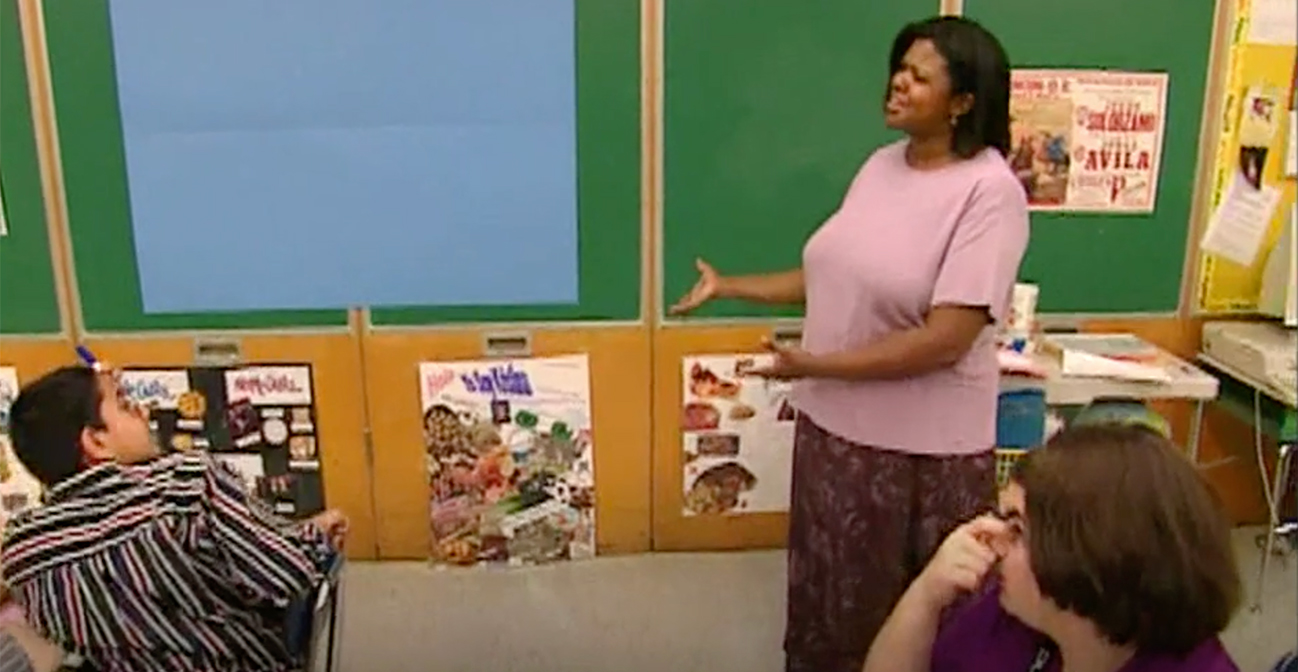Join us for conversations that inspire, recognize, and encourage innovation and best practices in the education profession.
Available on Apple Podcasts, Spotify, Google Podcasts, and more.

CLASSROOM AT A GLANCE
Teacher
Davita Alston
Language
Spanish
Grades
8
School
Shue-Medill Middle School, Newark, Delaware
Lesson Date
December 10
Class Size
26
Schedule
50 minutes, six times in a seven-day schedule
In this lesson, students talk about what they like to do when they are not in school. They begin by using new leisure-time vocabulary to make plans with a partner. In groups, they brainstorm a list of what young Americans like to do in their free time, and then prepare questions to ask native speakers about how they spend their time. Next, two young native speakers visit the class and describe typical out-of-school activities in Mexico. The class concludes with a comparison of Mexican and American activities, using a Venn diagram.
Communication: Interpersonal, Interpretive, Presentational
Cultures: Practices
Comparisons: Cultural
Communities: School and Community
Information gap
Information gap is a questioning technique in which learners respond to a question whose answer is unknown to the questioner. This contrasts with “display questions” that seek obvious responses. Example of an information gap question: What did you buy at the mall? Example of a display question: What color is your sweater?
Venn diagram
A Venn diagram is a type of graphic organizer consisting of two partially overlapping circles. A Venn diagram helps learners see the similarities and differences between two topics. Each circle represents one topic (for example, “U.S.” and “Target Culture”). Common characteristics are recorded in the overlapping area between the circles. Information unique to each topic is recorded in the area outside the overlap. The Venn diagram is a strong visual support for concrete and abstract comparisons.

Reflect on Your Practice
As you reflect on these questions, write down your responses or discuss them as a group.
Watch Other Videos
Watch other videos in the Teaching Foreign Languages K–12 library for more examples of teaching methodologies like those you’ve just seen. Note: All videos in this series are subtitled in English.
Put It Into Practice
Try these ideas in your classroom. Where it’s not already evident, reflect on how to adapt an idea that targets one performance range for application to other performance ranges.
World-Readiness Standards for Learning Languages
The World-Readiness Standards for Learning Languages create a roadmap to guide learners to develop competence to communicate effectively and interact with cultural understanding. This lesson correlates to the following Standards:
Interpersonal Communication
Interpretive Communication
Presentational Communication
Relating Cultural Practices to Perspectives
Cultural Comparisons
School and Global Communities
Curriculum References
Delaware World-Readiness Standards for Learning Languages (PDF)
Davita Alston’s Additional Resources
Web Resources:
National Hispanic Heritage Month
Web links to sites with information about Hispanic cultures, organizations, research information, and more
K-12 Foreign Language
The Web site for Fairfax County Public Schools in Virginia, which includes rubrics and useful Web links
StudySpanish.com
An online tutorial featuring a wide assortment of Spanish learning tools
SchoolNotes.com
A resource that provides teachers, parents, and students with an online community for sharing homework and other school-related information
Print Resources:
Garza, Carmen Lomas. Family Pictures/Cuadros de Familia. San Francisco, CA: Children’s Book Press, 2000.
Lorenzo, Patti. Get Them Talking!: Theater Games, Storytelling Techniques & Singing & Chanting Ideas. Houston, TX: Dolo Publications, Inc., 2002.
Ray, Blaine. Patricia Va a California. Berkeley, CA: Command Performance Language Institute, 2001.